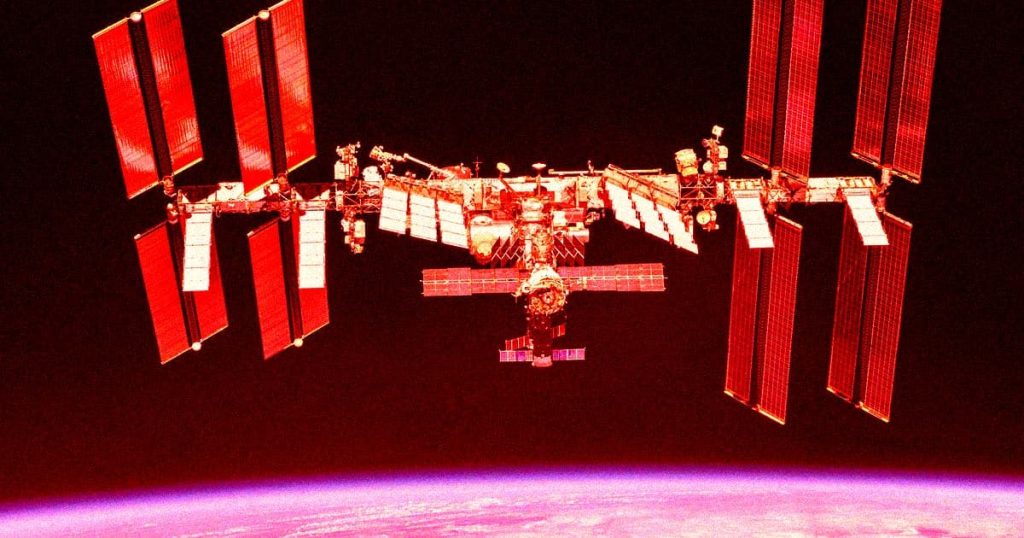
Experts Worried That Destroying the Space Station Will Damage the Earth’s Environment (Image Credit: futurism-com)
NASA is gearing up to slowly lower the orbit of the International Space Station until it burns through the Earth’s atmosphere and drops into the ocean, starting around 2030.
The agency says the station’s demise will be low risk, but other experts aren’t convinced.
As Space.com reports, having a gigantic chunk of metal and other materials burn up in the atmosphere could release harmful chemicals that could hurt the Earth’s protective ozone layer.
“Considering its large mass of 450 tons — half of human-made reentry mass into the atmosphere in 2019, a third of the reentry mass of 2023 — it only enhances the atmosphere problem induced by reentry,” Technische Universität Braunschweig researcher Leonard Schulz told the site.
“We’ll probably take a look in the future at what this reentry could bring to the atmosphere in terms of released substances,” he added.
Researchers have already found that when satellites such as SpaceX’s constellation of Starlink satellites burn up during reentry, it may inject harmful pollutants such as aluminum oxides into the upper atmosphere.
The trend, which is only bound to grow thanks to the sheer number of satellites now being launched into low-Earth orbit, could contribute to “significant ozone depletion,” according to a paper published in the journal Geophysical Research Letters earlier this year.
According to the paper’s authors, a 550-pound satellite generates roughly 66 pounds of aluminum oxide nanoparticles when it burns up, which would take up to 30 years to drift down into the stratosphere.
Therefore, given the space station’s enormous mass, the environmental impact could be considerable — and researchers are only beginning to wrap their heads around the extent of the risks involved.
NASA recently selected SpaceX to develop a “US Deorbit Vehicle” that’s designed to pull the aging lab out of its orbit.
To pull the largest human-made object to have ever orbited our planet out of its orbit will be anything but easy, requiring a beefed-up SpaceX Dragon cargo spacecraft.
Nudging it out of its orbit over the span of several years could give NASA some degree of control over where it may hit the ground. While NASA has yet to officially announce a chosen landing spot, the most likely area is in the center of the South Pacific Ocean, the furthest you can get from the nearest shore on Earth.
Fortunately, as Space Flight Dynamics Laboratory physicist Luciano Anselmo told Space.com, the impact on the ocean itself will likely be minimal.
All human-made debris to fall out of orbit since the start of human space activity has a smaller mass than a single sunk World War II battleship, Anselmo said, making it “negligible compared to the mass of all the ships and cargo sunk every year, not to mention all other forms of marine waste dumping and pollution.”
That doesn’t mean the disposal of the ISS won’t have any impact on the Earth’s environment, though.
“However, this can no longer be said for the upper atmosphere, where the impact of space launches and reentries is probably becoming significant, and whose possible consequences are not yet fully assessed,” Anselmo added.
More on the ISS: Astronaut Who Was Stranded in Space Laments Missing Thanksgiving and Child’s Graduation
Share This Article





